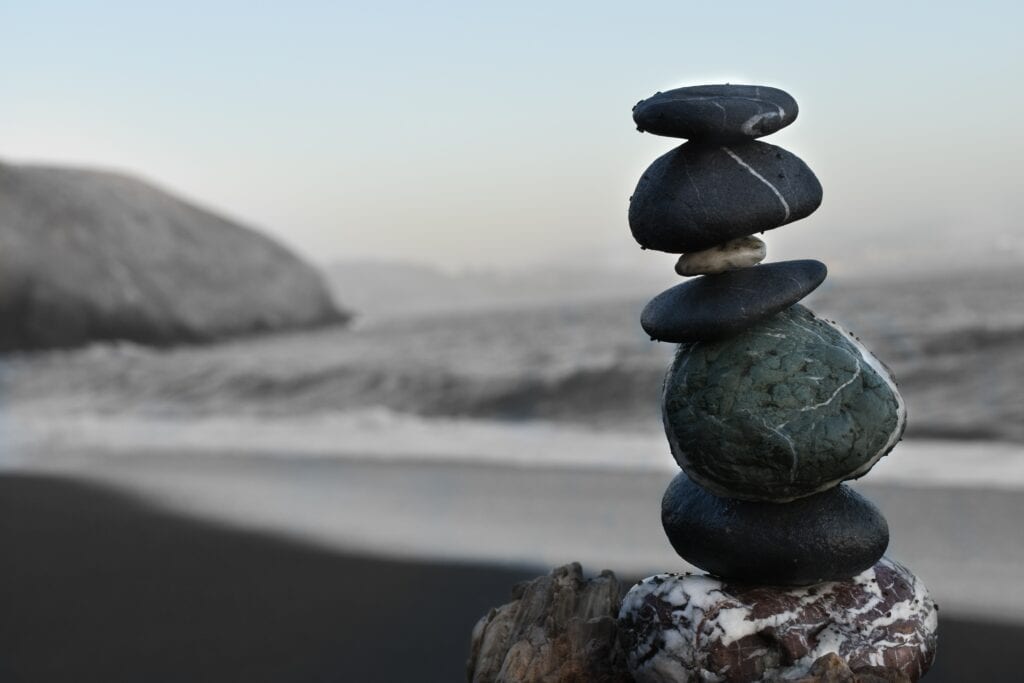These days most people know about the importance of incorporating active rest into our fitness routines.
Most people now know that it is essential to give muscles time to rest and recuperate, and that it is during this rest time that much of the gains happen. Most people also know that skipping rest periods and pushing your muscles to the limits can lead to serious injuries that set back progress.
But while we seem to have a good understanding of this logic when it comes to fitness, few of us extend this logic to the rest of our lives and our cognitive, mental, and emotional well-being.
The Importance of “Switching Off”
Many of us believe that we need to be “switched on” all the time, combining work hard and play hard attitudes which leave our brains and emotional selves little time to rest and recuperate, not to mention leaving no time to process everything that we are experiencing and integrate it into who we are as a person.
Remember, it is during the rest period that many of the gains actually happen.
This is a problem that digital nomads can be particularly susceptible to. No strict office hours mean that all hours are potential work hours. And when you are also exploring the world, you want to devote every non-working moment to actively enjoying where you are.
There is no faster recipe for burnout and emotional imbalance.
But what can you do about it? Especially if you are the type of person who gets frustrated “just doing nothing”, and when you really don’t have a lot of downtime at your disposal to just “switch off”.
One answer is meditation.
While meditation cannot replace a good night’s sleep (read our thoughts on the importance of sleep here), there is some evidence to suggest that just 20 minutes of meditation can have the same effect on your physical, mental, and emotional well-being as a complete “day off”.
While that might be debatable, what is clear is that for busy people who don’t have a lot of time to switch off, meditating for just 15-30 minutes a day can make a huge difference to their quality of life and their well-being.

What Is Meditation & Its Benefits
But what exactly is meditation? Does it mean sitting in a room full of incense and chanting in Hindu?
While that is a form of meditation that appeals to some people, that is not what meditation is at its core.
Meditation can be anything that lets you clear your mind of active thought. Letting the active mind switch off from its mile a minute thought processes for just a short period of time gives it the chance to rest and recuperate.
But isn’t that what we do when we sleep? Yes. But sleep and meditation are not the same because you brain is still active when you are meditating, so the process has a different effect on your mind.
Taking the fitness comparison again, the difference between sleep and meditation is the difference between spending your rest day sat in the couch doing nothing and spending your rest day with a casual walk in the park and maybe some light stretching. They are both beneficial for you, but one is more actively beneficial.
Why is meditation so effective?
Well, studies have shown that meditation thickens the pre-frontal cortex, which is the part of the brain that manages higher order brain function. It is linked to awareness, concentration, and decision making.
When you meditate, these parts of your brain become stronger, and start to take precedent over the parts of the brain that cause stress, anxiety, or uncontrolled emotional responses.
So, meditation literally changes how your brain works.
You can learn more about how the brain physically changes in response to meditation here.

How To Start Meditating
Meditation tends to be one of those things that people enjoy doing once they have a practice in place. But getting started can be incredibly difficult.
Here are four very good pieces of advice when you get started.
1. Don’t be too hard in yourself
Meditation is simply clearing your mind of active thought. But while it sounds simple, it is incredibly difficult to do. As you actively try and shut thoughts out, they will want to come rushing in.
Many people decide after just a few attempts at meditation when they can’t stop their mind from ticking and that they simply aren’t the type of person who can meditate.
But that isn’t true. Even people who have meditated for years still have this problem, and as with most things, on some days, meditation will be easier than others.
So, don’t be so hard on yourself if it is difficult when you start out, or if you have setbacks along the way.
The key to dealing with intrusive thoughts is to recognize and acknowledge them, and then put them to one side.
2. Start small
We have already said that around 20 minutes of meditation a day can make a big difference. But don’t expect that you are going to be able to sit down and meditate for 20 minutes on your first day.
It is hard if you aren’t accustomed to it, and until you find a time, space, and approach to meditation that works for you, you will probably find yourself easily distracted.
So, when you start, commit to just five minutes a day. When that feels doable, you can then increase the time to seven minutes, and so forth, until you can commit to doing the longer sessions that you want.

3. But do it every day
If you want to build your meditation practice, you need to make it both a priority and a habit, which means committing to turning up and doing it every day. Even if you had a terrible meditation practice one day, it is still important that you did it.
But at the same time, don’t beat yourself up if you do miss a day because of things beyond your control. Skipping meditation because you are too lazy to do it is one thing. Skipping meditation because a friend suddenly turned up out of the blue for 24 hours only and you decided to drop everything and show them around the city is another.
Be strict with yourself about your commitment to meditation, but don’t be a martyr to the process.
4. Remember that meditation can be active
For some people, there is nothing more horrible than the idea of sitting and doing nothing. While for some people the type of meditation where you literally detach from everything works, it doesn’t work for everyone.
If you struggle with either the idea or the practice of this type of meditation, try one of the active approaches to meditation that we are going to talk about now.
Approaches To Meditation
There are many different approaches to meditation, and what works best depends on the individual. Let’s take a look at some of the most common and effective methods of meditation.
Meditation
With this heading we want to encompass traditional meditation. This is where you get yourself in a comfortable seated position that you are going to be able to maintain for an extended period of time and place yourself in a space that is free of distractions. You might also add things to your space that allow your mind to relax, such as certain types of music or fragrances.
Your goal is then to sit still for an extended period of time, mastering control of your body (so that means no scratching) and clearing your mind of active thought.
Sometimes that means literally trying to think of nothing, and to actively push all thoughts from your mind. But that is not the only approach.
You might also try mindfulness, where rather than clearing your mind of thought, you focus actively on what is happening in the here and now. So, while you ignore invasive thoughts from elsewhere, you focus on what you can smell where you are, what you can hear, how your body feels, and so forth. You might even choose to have something in your hands to focus on the tactile sensation. You lose your active thoughts by diving deeply into what is happening in the present moment.
You might also try and mantra or spiritual approach to meditation, where you actively repeat a simple but powerful statement to yourself in your mind over and over again, forcing all other thoughts from your conscious mind.
Another approach is visualization meditation. In this practice you actively focus on imagining a place that has positive associations for you. You block everything else out by focussing in on the details. What does it smell like, what does it sounds like, are there intricate patterns on leaves, and so on.
The idea of all these approaches is to clear you mind of the normal thoughts that run across it during your waking hours, sometimes replacing those thoughts with something simple and positive.

Progressive Relaxation
Progressive relaxation is one of the few meditations that you will probably perform lying on your back. It is not generally recommended to lie down when meditating, firstly because there is a chance that you will fall asleep, and secondly because the blood moves around the body differently when you are lying down.
But in this type of meditation, you lie down on your back, and then progressively work to relax every part for your body, starting with you toes, and working your way up to the skin on your head.
Deal with each part of your body individually, tightening the muscle group before allowing them to relax.
Breath Work
Breath work is very much like traditional meditation, in that you clear your mind of thoughts by focussing on your breath. But it is different because you might employ different breathing techniques that also have an effect on your body, because they can alter the way that oxygen moves around your system.
Examples of breathing techniques include box breathing, where you breath in for a certain count, hold your breath for a certain count, breath out for a certain count, and then hold your breath again for a certain count.
You might also try constricted breathing, which forces you to slow your breath down and also means that the air that is passing into your body is warmer.
Nadi Shodana or alternative nostril breathing involves covering one nostril to breath in through one nostril only, and then switching to breath out through the others. Then you return the breath the way it came.
If you are new to beath work, we suggest finding audio tracks that you can follow along to so that you don’t need to think about what you are doing. Focussing on the breath is supposed to help you clear your mind, and not cause stress as you worry about what to do.

Yoga
When yoga is done properly, it is also a form of meditation. What do we mean by done properly?
Yoga is not just about the movement, as part of your practice you need to actively connect your breath with your movement. This controlled airflow can support you in some position, but the purpose of this is to give you something to focus on so that you can simultaneously clear your mind while you are doing your practice.
This is a very good form of meditation for anyone who struggles to stay still, and for anyone who suffers from tight muscles as a result of stress.
Again, it is often best to join a class or follow along to a video so that you can focus on your beathing and clearing your mind rather than trying to decide or remember what you need to do with your body.
A good teacher will also remind you regularly to come back to your breath, as it is not uncommon to forget occasionally throughout the practice.
Colouring
There are many activities that can help you clear your mind and think of nothing while not necessarily doing nothing. Colouring is one of those things as it doesn’t require you to think of anything or to make any particularly challenging decisions.
If you want to try colouring as meditation, try and choose images that have repeating patterns and no strict colour requirements. You want to clear your mind and just do rather than start wondering what colour hair a certain favourite character from childhood had.
Also make sure that all of your equipment is prepared and available so that it does not become a source of distraction.

Journaling
Another practice that some people find useful when they struggle to shut off their mind for traditional forms of meditation is journaling.
Getting the thoughts out of your head and on to paper can have the effect of clearing your mind.
But journaling is not the same as writing in a diary. You need to engage in stream of consciousness writing and simply put on paper whatever comes into your mind, with no editing, filtering, or judgement.
The idea is to just let the thoughts flow naturally. But rather than engaging with the thoughts, considering them or battling with them, you just let them out by putting them on the page.
The Verdict
When you are living the work hard, play hard lifestyle of a digital nomad, it can be easy to forget how important it is to let your mind and emotions have the opportunity to rest and recover.
While just switching off sometimes is a great thing to do, meditation can also help your mind recover quickly. Just 20 minutes of meditation can have the same effect as a full day off from all your stresses.
If you don’t already meditate, it can be a challenging habit to pick up and get into. But hopefully our advice and guidance can help you find ways to integrate meditation into your digital nomad lifestyle that work for you.












